Interview with Zoltan Istvan, US presidential candidate and leader of the Transhumanist Party. He supports basic income as part of his campaign platform.
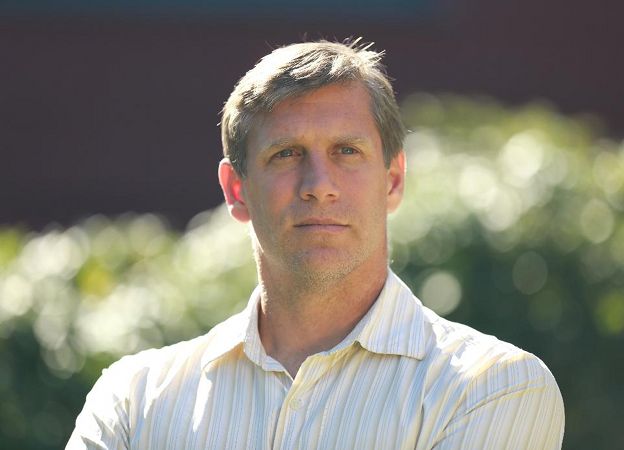

Interview with Zoltan Istvan, US presidential candidate and leader of the Transhumanist Party. He supports basic income as part of his campaign platform.
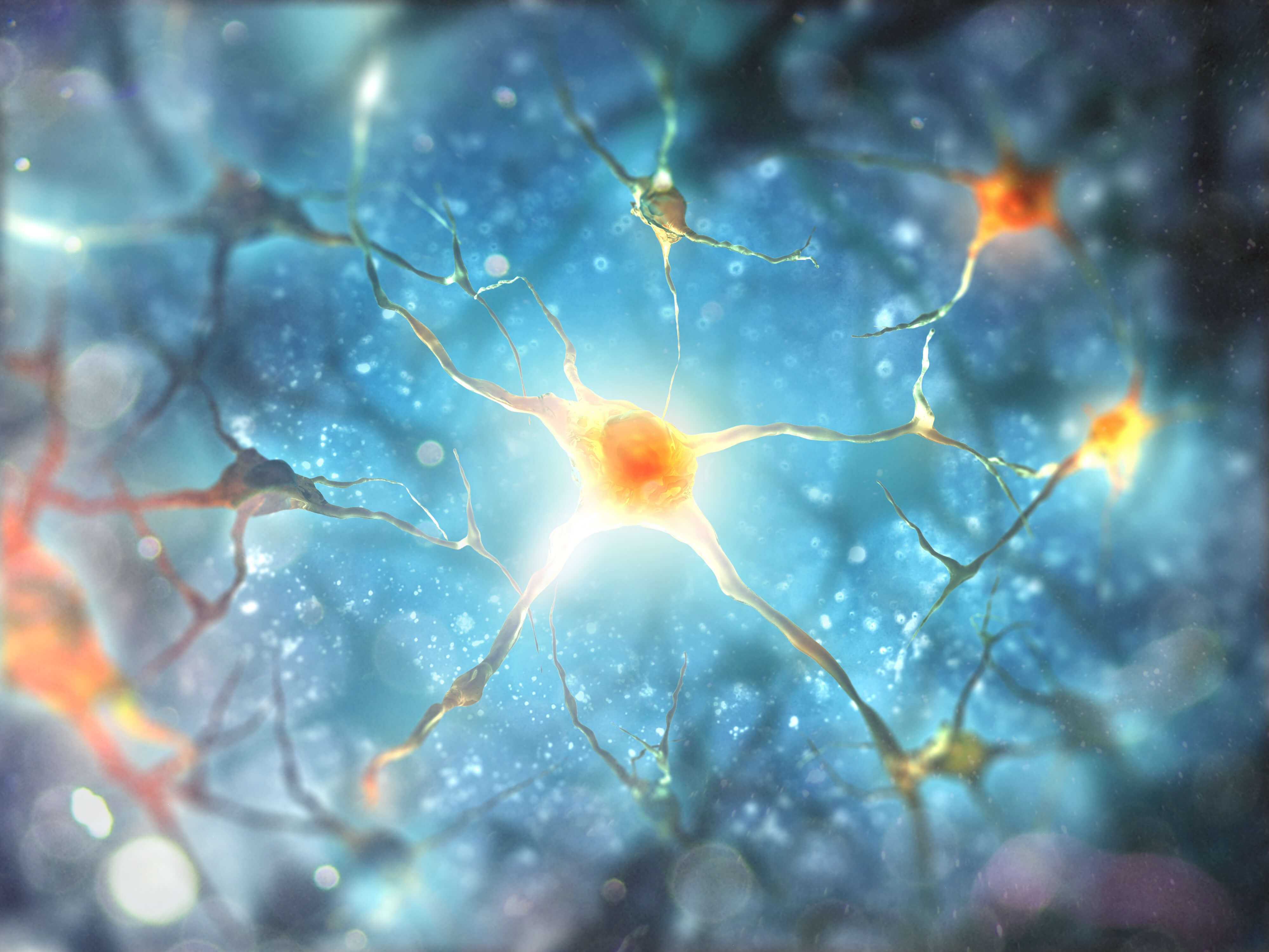
“We will find new things everywhere we look.” –Hunter S. Thompson
At the rate of 21st century technological innovation, each year brings new breakthroughs across industries. Advances in quantum computers, human genome sequencing for under $1,000, lab-grown meat, harnessing our body’s microbes as drugs, and bionic eye implants that give vision to the blind —the list is long.
As new technologies push the boundaries of their respective industries, fields are now maturing, growing, and colliding with one another. This cross-pollination of ideas across industries and countries has changed the world—and will continue to—and it’s one of the reasons Singularity University exists.

This bionic spine could help paralyzed patients walk again.
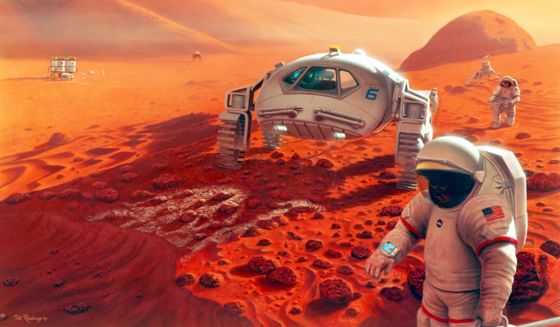
The Rise of the Rest and Mars Colonization
The Chinese word for crisis has two characters (危機). The first character represents danger and the second can be interpreted as opportunity, change of time, moment or chance. Even though the meaning of these Chinese characters can vary according to the context and nearby characters, the understanding of crisis (危機) as danger (危) plus opportunity (機) can help us think about the challenges faced by humanity in 2030.
In the coming years, China will have the largest economy of the planet, dethroning the USA to number two, both economically and scientifically. India will also be catching up fast as the third largest economy in the world, and its population will continue increasing after overtaking that of China in 2025. The re-emergence of Asia, as represented by China and India, will create a dramatic shift in power and geopolitics from what has been called the West to the East. The international hegemony enjoyed by the West during the last half millennium will move back to the East, which already led the world in many areas before the European Renaissance.
Fortunately, during the next two decades, the world economy will keep expanding and human conditions will get better throughout the whole planet. Indeed, a rising tide lifts all boats. Poverty will be substantially reduced and the environment will be significantly improved thanks to a growing global conscience and continuous advances in technology. Even Africa, the historic cradle of civilization, but considered a basket case during the last few centuries, will experience its own re-emergence in the world stage. After experiencing growth of 5% during the 2010s, and even higher during the 2020s, most African countries will be joining the rapid development of China and India, like most of the rest of the world.
The world in 2030 will be radically different from the world today. Rapid economic growth and convergence will have lifted the conditions of the bottom of the pyramid, and many people will raise their eyes into outer space. The colonization of Mars will start during the 2020s according to different plans by many governments (like those of China, Europe, India, Japan, Russia, and the USA) and even some private enterprises (for example, MarsOne, SpaceX, and Virgin Galactic).
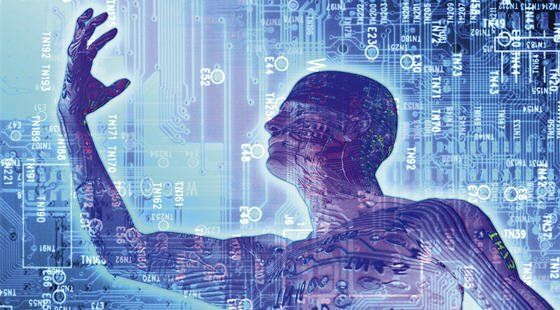
Exponential Technologies and Immortality
Change is not constant, in fact, change is accelerating very fast. We will see more transformations in the next 20 years than in the past 200 years. Some technologies are radically changing humanity, in general, and also changing human beings, in particular. Many experts now talk about the four sciences and technologies of the future: NBIC (nano-bio-info-cogno). The NBIC fields are converging at an accelerating rate and they will help to transcend many human limitations in order to improve lives all around the world, and eventually beyond our tiny planet.
We might think of nano and bio as the hardware of life, and info and cogno as the software of life. In the next two decades, we will be able to replicate and improve the complexity of both the hardware and software of human beings. The complexity of our hardware is embodied in the human genome and its 3 gigabits of data, while the complexity of our software is implied by the human brain and its 1017 operations per second.
According to some technology trends, we might achieve physical immortality by copying, reproducing, augmenting, and enhancing our current hardware and software. In medicine, some scientists say that aging is actually a disease, but a curable disease. In fact, some cells do not age, for example, bacteria, germinal cells, stem cells, and cancer cells do not go through the aging process. It is fundamental to understand why this happens and use that knowledge to stop aging in more complex organisms like us. By so doing, our hardware might live indefinitely thanks to longevity discoveries related to genetic treatments, regenerative medicine, and stem cell therapies, for example.
We might also reach immortality through backing up our software. Thanks to research like the Human Brain Project in Europe and the BRAIN Initiative in the USA, we will be able to reengineer our brains. As computer-to-brain interfaces keep improving, some scientists believe that we will eventually be able to upload our brains into machines. In the next two decades, we might well see the “death of death”.
Humanity is fast approaching what some people call the “Singularity”: the moment when artificial intelligence will reach human intelligence levels, and then quickly overtake it. Perhaps then some humans might become transhumans and posthumans, changing forever life on Earth and the universe.
José Luis Cordeiro, MBA, PhD (www.cordeiro.org)
Visiting Research Fellow, IDE-JETRO, Tokyo, Japan (www.ide.go.jp)
Director, The Millennium Project, Venezuela Node (www.Millennium-Project.org)
Adjunct Professor, Moscow Institute of Physics and Technology, Russia (www.mipt.ru)
Founder and President Emeritus, World Future Society, Venezuela Chapter (www.FuturoVenezuela.net)
Founding Energy Advisor/Faculty, Singularity University, NASA Research Park, California, USA (www.SingularityU.org)

Cool new story and video on transhumanism:
SANTA CLARA (CBS SF) –During Super Bowl 50, the world saw the Denver Broncos throttle the Carolina Panthers. The game’s MVP Von Miller dominated Cam Newton in a display of super human strength and skill.
You may not know it, but a growing number of engineers, biohackers and entrepreneurs hopes one day we’ll all be super human as well.
A bionic eye may not that far away.
“We will be able to see 100 miles with sheer accuracy we’re going to be able to see germs on each other’s bodies,” exclaimed futurist Zoltan Istvan.

A DARPA-funded research team has created a novel neural-recording device that can be implanted into the brain through blood vessels, reducing the need for invasive surgery and the risks associated with breaching the blood-brain barrier. The technology was developed under DARPA’s Reliable Neural-Interface Technology (RE-NET) program, and offers new potential for safely expanding the use of brain-machine interfaces (BMIs) to treat physical disabilities and neurological disorders.
In an article published in Nature Biotechnology, researchers in the Vascular Bionics Laboratory at the University of Melbourne led by neurologist Thomas Oxley, M.D., describe proof-of-concept results from a study conducted in sheep that demonstrate high-fidelity measurements taken from the motor cortex—the region of the brain responsible for controlling voluntary movement—using a novel device the size of a small paperclip.
This new device, which Oxley’s team dubbed the “stentrode,” was adapted from off-the-shelf stent technology—a familiar therapeutic tool for clearing and repairing blood vessels—to include an array of electrodes. The researchers also addressed the dual challenge of making the device flexible enough to safely pass through curving blood vessels, yet stiff enough that the array can emerge from the delivery tube at its destination.
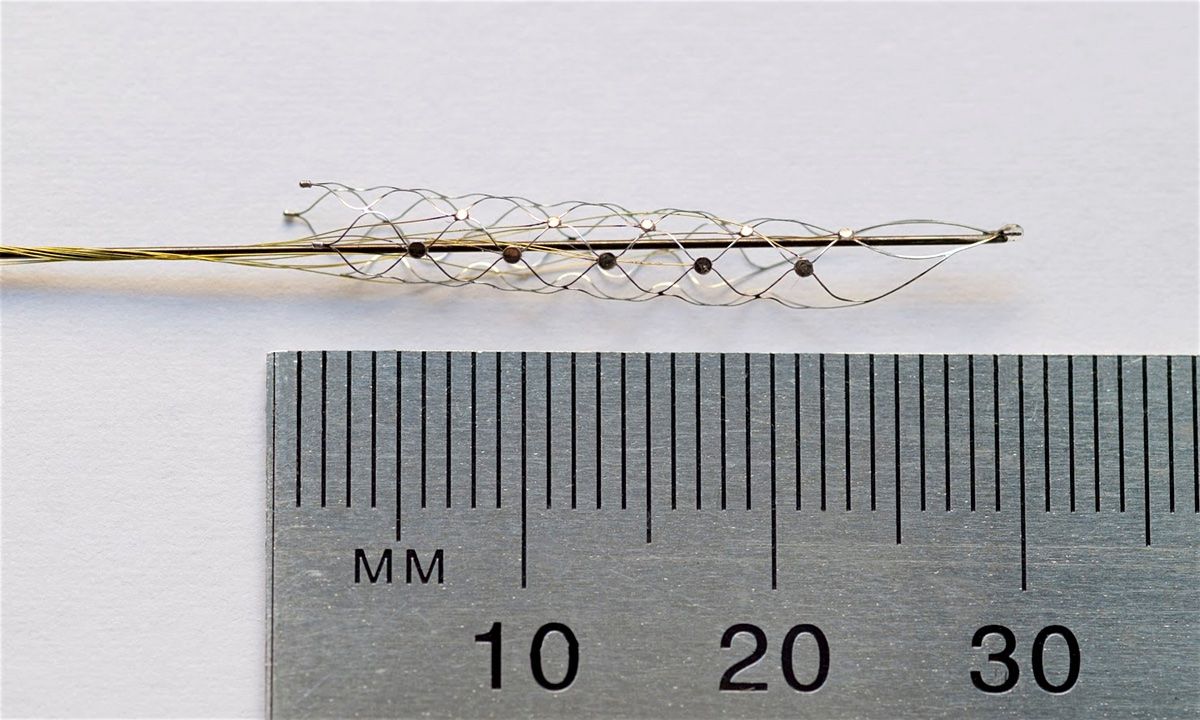
Australian scientists hope that a tiny device just 3cm long and a few millimetres wide will enable paralysed patients to walk again by allowing them to control bionic limbs with the power of subconscious thought.
The new device, dubbed the “bionic spine”, is the size of a small paperclip and will be implanted in three patients at the Royal Melbourne hospital in Victoria next year. The participants will be selected from the Austin Health spinal cord unit, and will be the first humans to trial the device, which so far has only been tested in sheep.
Doctors will make a tiny cut in the neck of the patients and feed a catheter containing the bionic spine up through the blood vessels leading into the brain, until it rests on top of the motor cortex, the part of the brain where nerve impulses that initiate voluntary muscle movements come from. The catheter will then be removed, leaving the bionic spine behind.
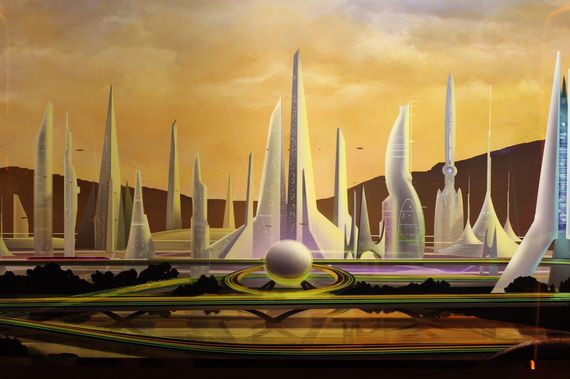
An article on transhumanism in the Huff Post:
Future Transhumanist City — Image by Sam Howzit
Transhumanism–the international movement that aims to use science and technology to improve the human being–has been growing quickly in the last few years. Everywhere one looks, there seems to be more and more people embracing radical technology that is already dramatically changing lives. Ideas that seemed science fiction just a decade ago are now here.
Later this year, I’ll be speaking at RAAD, a one-of-a-kind life extension and transhumanism festival in San Diego where thought-leaders like Ray Kurzweil, Dr. Aubrey de Grey, and Dr. Joseph Mercola will be sharing their ideas on our future. With so much radical tech growth and science innovation occurring in the last few years, the question has been asked: What are the best strategies for the transhumanism movement moving forward? Of course, as the 2016 US Presidential candidate of the Transhumanist Party, I have my own ideas–and naturally they’re quite politically oriented.
 Transhumanist Party supporters protesting against existential risk — Photo by Daniel Sollinger.
Transhumanist Party supporters protesting against existential risk — Photo by Daniel Sollinger.
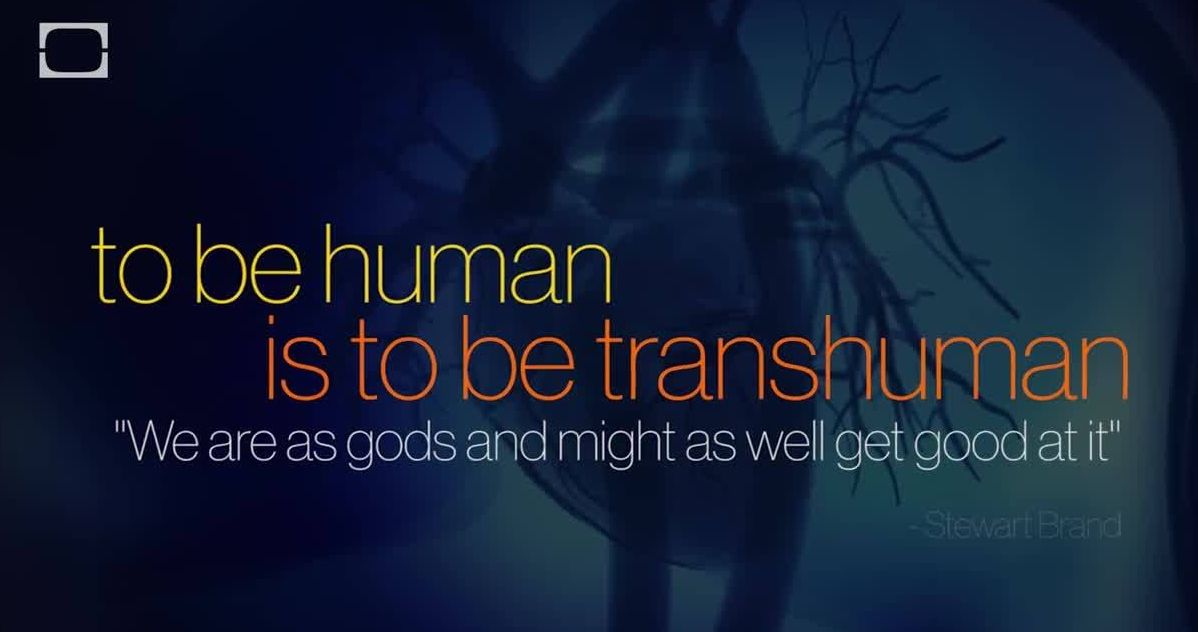

What does it mean to be a Transhumanist and how will it change humanity as we move towards Transhumanism? — Francesco Neo Amati for Serious Wonder.